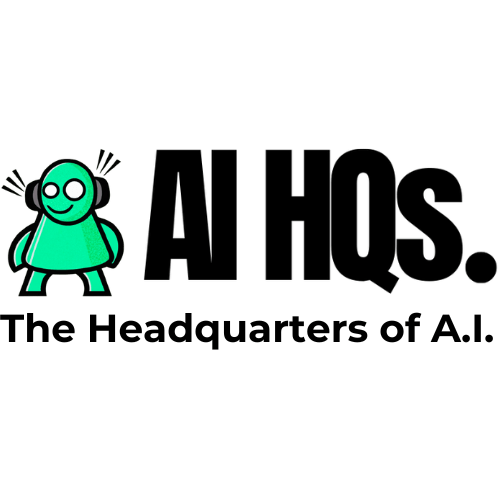Burning Paintings: Environmental Impact of Generative AI
A recent study conducted by researchers at Hugging Face and Carnegie Mellon University sheds light on the environmental cost associated with these advancements. Each time AI is utilized to generate an image, compose an email, or answer a query through a chatbot, it comes at a significant environmental cost.

The study reveals that the energy consumption involved in generating an image using a potent AI model is comparable to fully charging a smartphone. This alarming statistic underscores the environmental impact of our reliance on AI for everyday tasks. However, the study also highlights a more sustainable aspect of AI usage—text generation. Surprisingly, creating text using an AI model is far less energy-intensive. The research suggests that generating text 1,000 times consumes only 16% of the energy required to charge a smartphone fully.
This groundbreaking study not only exposes the carbon footprint associated with using AI models but also emphasizes that their actual use contributes more to environmental impact than the energy-intensive training process. By examining 10 popular AI tasks on the Hugging Face platform, such as question answering, text generation, image classification, captioning, and image generation, the researchers aimed to quantify the emissions associated with each task. The experiments, run on 88 different models, revealed that generating images emerged as the most energy- and carbon-intensive AI task.
For instance, using a powerful AI model like Stable Diffusion XL to generate 1,000 images is equivalent to the carbon dioxide emissions produced by driving approximately 4.1 miles in an average gasoline-powered car. On the other hand, the least carbon-intensive text generation model examined was responsible for emissions equivalent to driving a mere 0.0006 miles in a similar vehicle.
This newfound understanding of AI’s carbon footprint provides valuable insights, prompting us to make informed decisions about the ethical use of AI. According to Sasha Luccioni, the AI researcher at Hugging Face leading the study, this research marks the first attempt to calculate the carbon emissions associated with using AI models for different tasks. The hope is that this knowledge will encourage individuals and businesses to adopt a more planet-friendly approach to AI utilization.
The study also delves into the energy consumption patterns of large generative models versus smaller, task-specific models. It reveals that using large generative models for various outputs is significantly more energy-intensive than employing smaller, more specialized models. For example, using a generative model to classify movie reviews consumes about 30 times more energy than utilizing a fine-tuned model designed specifically for that classification task.
Luccioni advocates for a more selective approach to using generative AI, suggesting that for specific applications like searching through emails, opting for less resource-intensive models could be a more sustainable choice. This call for consciousness in AI usage extends beyond individuals to big tech companies, urging them to prioritize energy-efficient models in their products.
The study’s findings also highlight the evolution of AI systems over the years. Jesse Dodge, a research scientist at the Allen Institute for AI, emphasizes the importance of comparing carbon emissions from newer, larger generative models with those from older AI models. He points out that the latest wave of AI systems is considerably more carbon-intensive than their predecessors from just a few years ago.
The increasing ubiquity of AI models in our daily lives is undeniable. The study estimates that popular models like ChatGPT, with up to 10 million users a day, could surpass their training emissions in just a couple of weeks due to their widespread usage. This stark reality emphasizes the urgency of understanding and mitigating the environmental impact of AI.
The second article explores Google’s ambitious endeavours in the AI landscape, unveiling new tools and products at its annual I/O conference. Billions of users are set to experience the integration of Google’s latest AI language model, PaLM 2, into over 25 products, including Maps, Docs, Gmail, Sheets, and the chatbot Bard. This move follows fierce competition from rivals like Microsoft and OpenAI, compelling Google to embrace a high-risk strategy of integrating AI-powered products into its ecosystem.
Despite the safety and reputational risks associated with AI language models, Google aims to provide users with an enhanced experience by allowing them to generate text templates, code, and interact with chatbots seamlessly. The company’s push to integrate the latest AI technology into a variety of products is a significant shift in strategy, as it seeks to offer value to users in a bold but responsible manner.
The blog explores the implications of Google’s strategy, acknowledging the trade-offs and potential pitfalls. The integration of large language models into products introduces the risk of generating inaccurate or buggy code, as seen in the case of Bard’s trial launch containing a factual error in its advertising. The article emphasizes the delicate balance between releasing exciting AI products and ensuring scientific research for reproducibility and safety.
The heightened scrutiny from regulators over AI products adds another layer of complexity to Google’s strategy. The blog delves into the regulatory landscape, with the EU finalizing its first AI regulation, the AI Act, and the US paying closer attention to the potential harm caused by AI. This scrutiny poses a challenge for tech companies like Google, as they navigate the fine line between innovation and responsible AI deployment.
In conclusion, the blog provides a comprehensive overview of the environmental impact and ethical considerations associated with AI usage, as highlighted by the first article. It also explores the strategic decisions and challenges faced by tech giants like Google as they integrate AI into various products, shaping the future of technology and its implications for the environment and society at large. As we stand at the intersection of innovation and responsibility, the evolving landscape of AI necessitates a thoughtful and sustainable approach to ensure a harmonious coexistence with our planet and society. For all my daily news and tips on AI, Emerging technologies at the intersection of humans, just sign up for my FREE newsletter at www.robotpigeon.beehiiv.com






